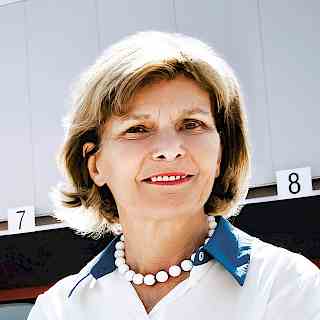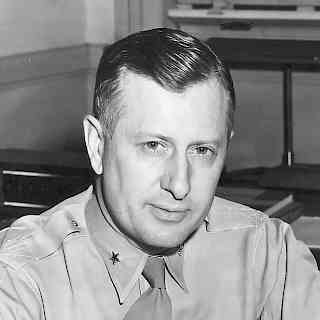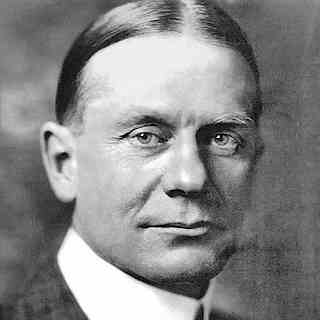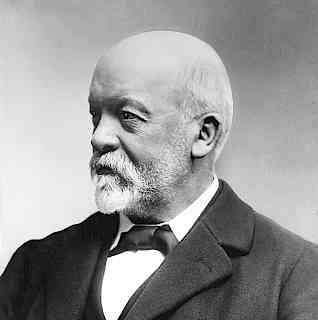Among inventors
Logistics Hall of Fame
We may not realise it, but groundbreaking logistics innovations affect our lives every single day. Globalisation would never have evolved to its present form without them. The Logistics Hall of Fame on the internet honours some of the faces behind the discoveries and inventions. Last year our own Heidi Senger-Weiss became the first woman to be inducted. We are presenting a few of her illustrious colleagues below.
Heidi Senger-Weiss: Determined internationalisation
Since 1968 Heidi Senger-Weiss has been representing the interests of the transport logistics industry in a range of different capacities. For 36 years she managed Gebrüder Weiss together with her husband Paul Senger-Weiss. Numerous innovations can be traced to her initiatives, including the 1988 establishment – along with two partner companies – of APS Austria Paket System (later DPD Austria), a parcel service that soon became the B2B market leader in Austria. She was also behind the expansion of IT in the realm of freight forwarding, became an indefatigable advocate of internationalisation, and has been building and expanding Europe’s first mixed cargo network since the 1980s.
 (Image: Gebrüder Weiss)
(Image: Gebrüder Weiss)
William H. Tunner: Architect of the Berlin Airlift
Born in 1906, William H. Tunner began his career at the United States Military Academy at West Point and soon became expert in air transportation. During World War II he organised the US air bridge operation over the Himalayas, developing an innovative system for transporting urgently needed materials. On the morning of June 24, 1948 the Soviet occupation forces blocked all the transit routes to West Berlin – on road, rail and water – leaving over two million people cut off from vital supplies. One air corridor alone remained open and Tunner used this to fly in provisions for the city's residents. The Berlin Airlift will go down in history as the birth of modern airborne logistics; for the first time, planes gained recognition as means of freight transport. To feed the people of West Berlin, Tunner created three air corridors and mapped out departure times, speeds, altitudes and take-off trajectories with great precision. This meticulous planning, which allowed aircraft to take off every three minutes, also involved the coordination of aircraft types, various runways, maintenance operations and unloading procedures. Tunner ultimately shortened the turnaround of aircraft in Berlin from 75 to just 30 minutes. By the time the blockade ended on May 12, 1949, some 280,000 cargo flights had taken off for West Berlin.
 (Image: Free of rights)
(Image: Free of rights)
Eugene Bradley Clark: from the tructractor to the forklift
Born in 1873, Eugene Clark worked as a mechanical engineer in a steel mill. When the company was facing bankruptcy at the start of the 20th century, the creative young man spontaneously offered to become a partner in the company, take over its management and rescue it. Soon the company was back in the black. To help his employees transport construction materials between the factory buildings, Clark came up with the idea for the first front-loading truck – a basic, petrol-powered three-wheeled vehicle with a "bucket" capable of carrying two-tonne loads at the front. It had a few unusual features. To go left you turned the steering wheel right. It didn't have any brakes either. A little later, during World War I, the US military started using these vehicles in its ammunition dumps. Clark improved the steering system, developed brakes, and christened his invention the Tructractor. In 1919 he sold as many as 75, and three years later launched a truck with a lifting platform that was powered by a combustion engine. In 1924 he finally built the first ever forklift truck, and it became a huge success after World War II. His company – Clark – still numbers among the world's leading forklift manufacturers today.
 (Image: Logistics Hall of Fame)
(Image: Logistics Hall of Fame)
Gottlieb Daimler: the inventor of the truck
Gottlieb Daimler, originally born Gottlieb Däumler in 1834, was a trained gunsmith who studied engineering. In 1869 he became director of the engineering workshops at Karlsruher Maschinenbaugesellschaft, laying the cornerstone for today’s company, Daimler AG. Together with Wilhelm Maybach, he developed and patented a single-cylinder four-stroke engine – the first petrol-fuelled combustion engine. In 1886 the two men fitted an engine inside a horse carriage, and the first motorised, four-wheeled vehicle was born. (The vehicle produced by his compatriot Carl Benz only had three wheels.) In 1896 Daimler's company built the Phoenix, the first-ever motorised truck. From today's perspective, its specifications may not seem overly impressive: it had a 4hp four-stroke engine with two cylinders, a top speed of 10 kilometres an hour and a maximum payload of 1.5 tonnes. The appearance of these vehicles on the roads nevertheless proved a key milestone in the evolution of freight transport. In 2014 the global road transport industry posted sales of 125 billion euros.
 (Image: Free of rights)
(Image: Free of rights)
Malcom McLean: the pioneer of container transport
Malcom Mclean was born in 1913 and initially ran a petrol station. In partnership with his siblings, he used his earnings to buy his first truck in 1935. Together they set up a small freight forwarding company. In the following years, McLean built an empire that eventually became the second-largest transportation company in the US. At a very early stage he realised that goods transhipment could be accelerated by using large, standardised receptacles. At this time all cargo was being unloaded piece by piece – before being repackaged and loaded onto another means of transport. Dozens of workers were often needed for this process, which sometimes took days or even weeks. Yet industry initially showed little interest in his idea. As a logistics services provider, he was prohibited from operating a shipping line. So he sold McLean Trucking and used the proceeds to purchase the Pan Atlantic Steamship fleet. On April 26, 1956, the converted oil tanker "Ideal X" left the US port of Newark with 58 containers on board – marking the birth of container shipping. Many people, particularly in Europe, feared it would mean the closure of harbour services. In reality, the opposite happened: the world's ports boomed. Today some 90% of global trade travels on ships.
 (Image: Maersk Line)
(Image: Maersk Line)
Gottfried Schenker: the inventor of rail groupage transport
Gottfried Schenker, who was born near the Swiss town of Olten in 1842, began his career as an official at Switzerland's Central Railway Company. A year later he moved into the private sector, where he worked for a number of transportation companies. In 1872 he established his own freight forwarder – Schenker & Co. – together with two partners. And in the following years he operated the first rail groupage service between Paris and Vienna, delivering luxury items like champagne and haute couture from the French capital to Vienna's high society. He pooled individual items to make larger lots which he transported by rail and then – at that time at least – by horse and carriage. In the following years he expanded his mixed cargo network, adding waterbound and road transport to his services. In this way he became the first entrepreneur to offer a brand new freight forwarding service that was cheap and fast and charged fixed cargo rates. His innovation revolutionised transportation services: "one provider from door to door". By the time he died in 1901, his company already had 32 subsidiaries in 13 European countries with over 1,000 employees.
 (Image: Free of rights)
(Image: Free of rights)
Taiichi Ohno: the inventor of "just-in-time"
Born in Manchuria in 1912, Taiichi Ohno began working for Toyota during the 1930s. After the young engineer Eiji Toyoda, later the Japanese carmaker's CEO, had been to the US and studied Ford's assembly plants, he asked Ohno – then his director of production – to develop a dedicated system for Toyota. This ultimately owed little to Ford's methods, being closer to the supply system practiced by American supermarkets which was tailored to covering actual customer requirements. This principle, whereby the correct volume is stocked in the right order and quantity at the right time and place, is now known as the Toyota production system. Even today it serves as the guiding principle for car manufacturers across the planet. Additionally, Ohno developed the "just-in-time" principle whereby components only become available at the moment they are required. In this way, a direct supply line is created between assembly plants and their suppliers, minimising overproduction, excess inventories and high interim warehousing costs.
 (Image: Toyota Material Handling Europe)
(Image: Toyota Material Handling Europe)
The Logistics Hall of Fame
was established in 2003 to honour leading figures who have made outstanding contributions to the development of logistics and supply chain management. The aim is to document the achievements and innovations of the industry, and to share these with a wider public audience. Industry federations and public organisations, politicians and business leaders, scientists and academics, and the media, companies and logistics professionals around the world are therefore encouraged to nominate candidates for induction into the Logistics Hall of Fame. To be considered, nominees must have made a sustained and positive impact on the logistics capabilities of a large number of companies or institutions. With its international panel, the Historic Milestones Committee will assess the candidates’ qualifications.
Imke Borchers is a literary scholar and editor for the Atlas.


